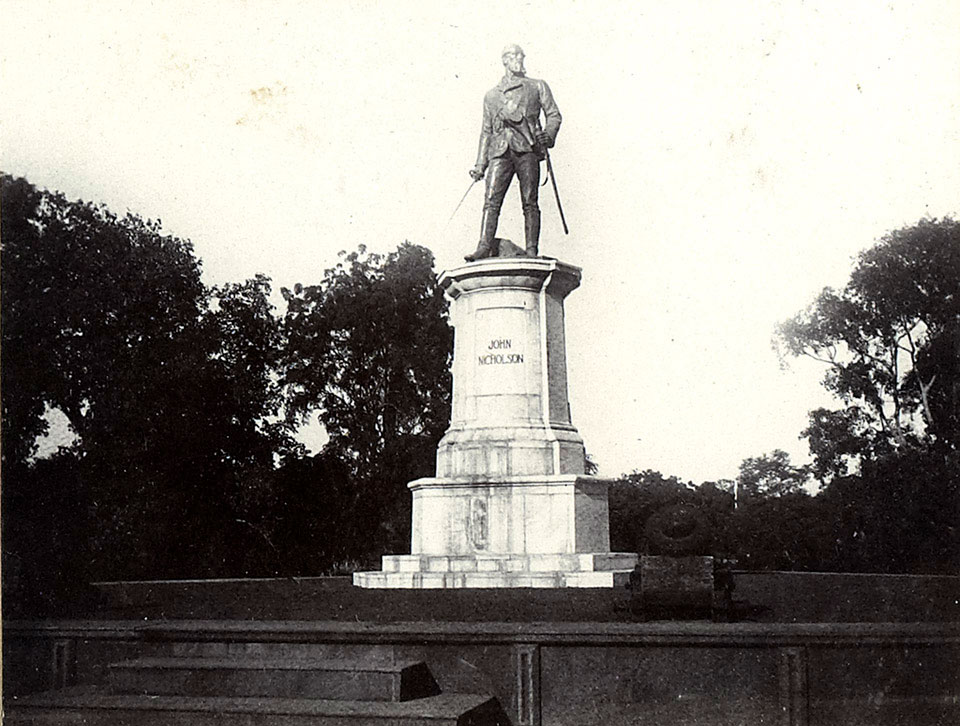
Online Collection
« Prev - 1 of 1 results - Next »
Statue of John Nicholson, Delhi, 1911
Photograph from an album entitled, 'Southern Provinces Mounted Rifles Delhi Durbar Contingent, 12th December, 1911', 1911.
John Nicholson (1821-1857), was first commissioned into the Bengal Infantry in 1839 and spent his whole career in India. Speaking several Indian languages, he served in many of the frontier areas in India as well as distinguishing himself in both Sikh Wars. A tall and imposing figure, Nicholson was known as a fearless commander who inspired those he led.
When the Indian Mutiny (1857-1859) broke out in May 1857 Nicholson once again led his men with great courage and skill but also gained a reputation for severity when dealing with mutineers and rebels. Nicholson was appointed as commander of the main storming party during the Siege of Delhi (September 1857). The attack was a success but Nicholson received a fatal wound while leading his men and died some nine days later, on 23 September, aged 35.
This memorial was erected in Delhi near the Kashmir Gate where Nicholson died. When India gained independence in 1947, the sculpture of Nicholson with drawn sword, like other overt symbols of the Raj, was removed. It later found a home at the Royal School Dungannon in Northern Ireland, where Nicholson was educated. It was unveiled there in 1960 by Lord Louis Mountbatten, the last Viceroy of India.
NAM Accession Number
NAM. 1985-09-19-18
Copyright/Ownership
National Army Museum, Out of Copyright
Location
National Army Museum, Study collection
Object URL
https://collection.nam.ac.uk/detail.php?acc=1985-09-19-18

